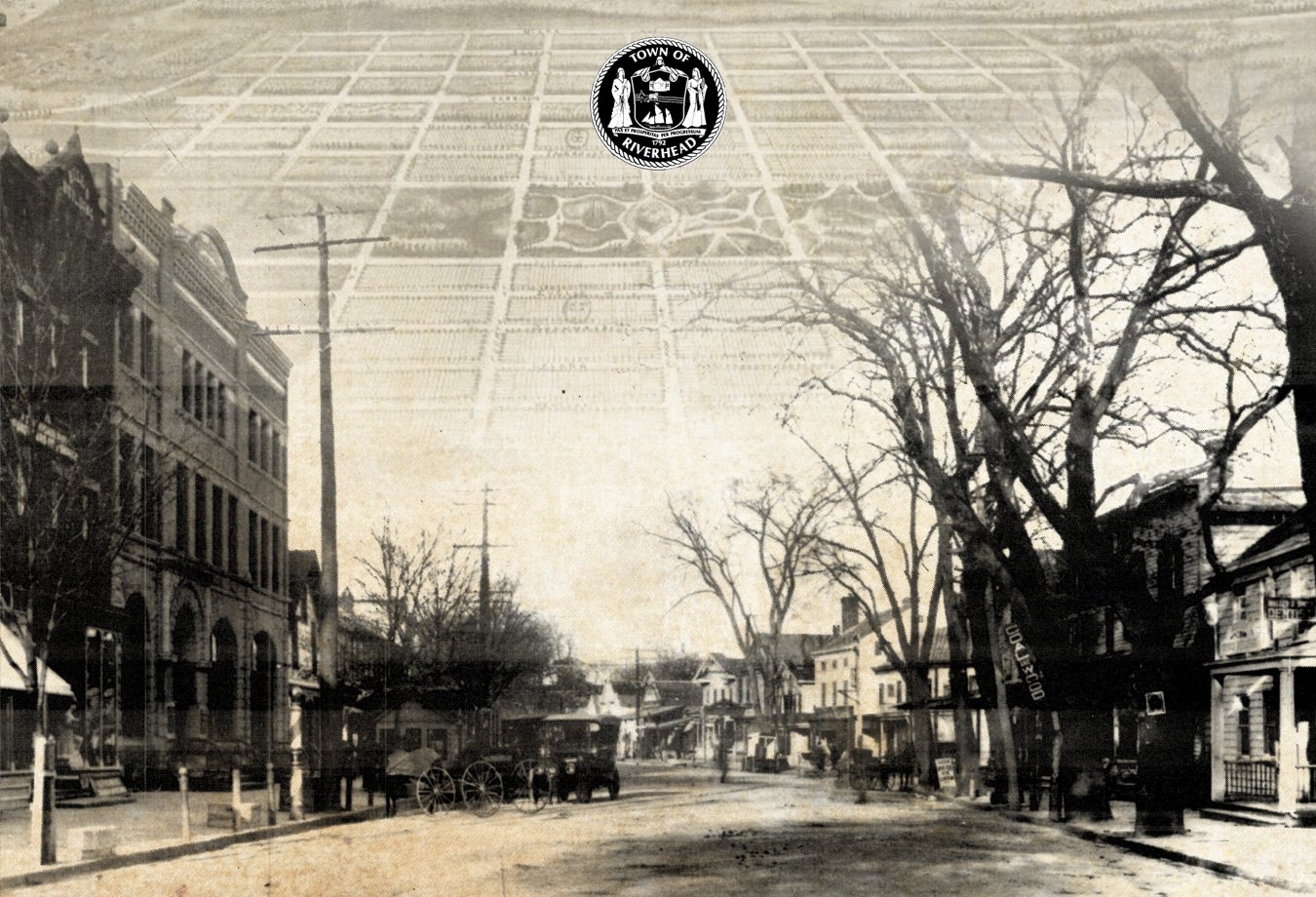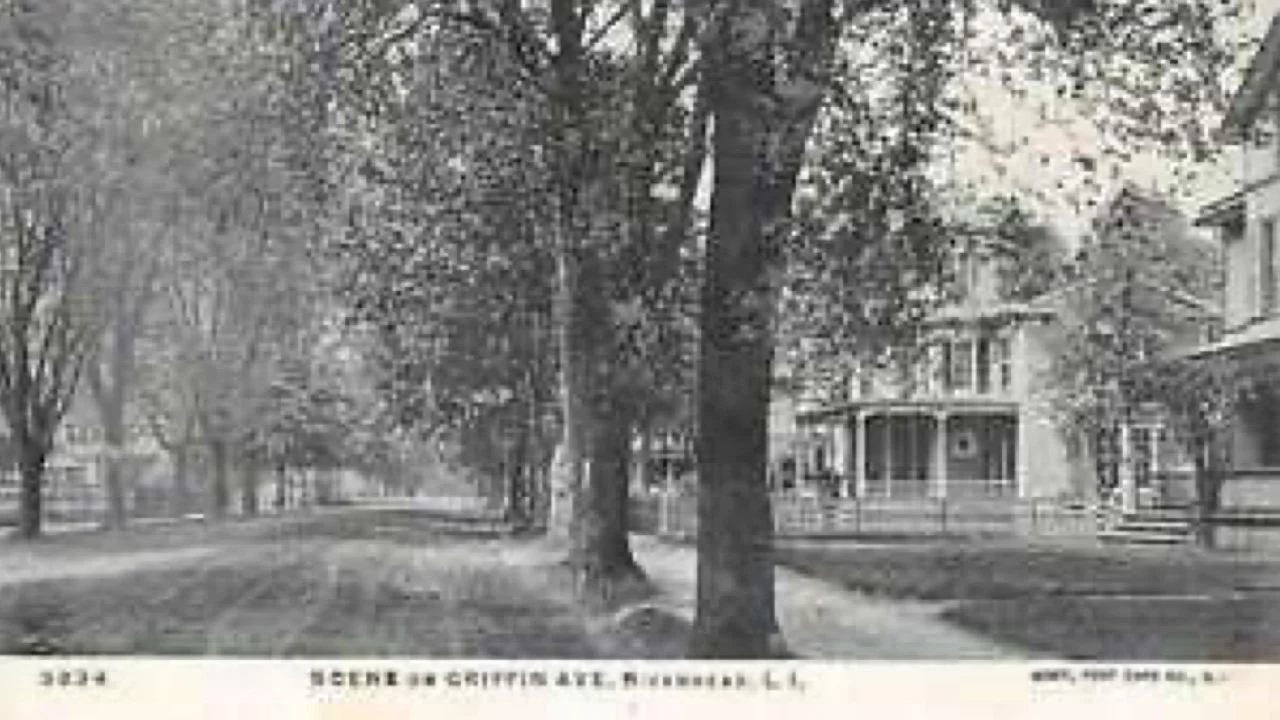
SCROLL BELOW FOR A MAP OF ALL THE STOPS ON THE TOUR.
SCROLL BELOW FOR TEXT OF THIS STOP
-
218 and 224 Griffing Avenue
Charles Hallett House and Moore-Barnes House
Narrator: Lulu Brown (18-year-old Virginia-born Black maid to Newins family at # 224 in 1910); voiced by Orlesha Banks
Hi there. You are standing in front of the Charles Hallett House. I am Lulu Brown. In 1910 I was the maid in the house next door to the left. I was born down in Virginia, but there weren’t many jobs down there, so when I was just 18, I came up here to Riverhead to work.
Griffing Avenue was one of Riverhead’s most fashionable residential streets back then. It was lined with beautiful houses and beautiful trees. And just up the street was the famous Griffin House inn. And across the street was the second county courthouse. That was pretty nice too – although the jail behind it probably was mot so nice – at least for the residents.
This house was built by Charles Hallett. I didn’t know him. He died in 1894, well before I came up here, but his son was still living here.
I’ve heard that he was born in Bridgeport Connecticut as was a nephew of P. T. Barnum. In 1876 the Brooklyn Eagle called him Riverhead’s “leading citizen.” He ran a paperboard mill, a flour mill and a factory that made wood moldings and trim – one of the biggest enterprises in Riverhead at the time. He was also known as an architect. Everyone said he designed his own house. Undoubtedly his mill made all the moldings and trim.
He later used the extra waterpower at one of his mills to generate electricity in the early evening hours. His “Hallett Electric Light Company” was one of two electric power companies serving Riverhead around the turn of the century. People tell me that his house was the first in the town to have electric lights.
F. Carl Hallett, one of Charles Hallett's three sons, lived here after his father's death. He continued to operate the mills and electric company with his two brothers. Reputedly, he was also the first owner of an automobile in Riverhead, a Locomobile, around 1902. Would you believe it was steam powered? Some people say his next door neighbor S. Terry Hudson had the first automobile. Don’t you believe them!
I lived and worked for the Jane Newins family in the Moore-Barnes House just to the left at 224 Griffing Avenue. One of her daughters married a Barnes. That is why it is called the Moore-Barnes house. Like its two neighbors, it was built in the early 1860s – long before I came to town. People tell me all of these houses are Italianate in style. Just look at those wide eaves, the brackets supporting them and that cupola on top. The Newins and Barnes family operated Riverhead’s largest cigar factory. Did you know that Riverhead once had four cigar factories that produced millions of cigars each year?
As for me, in 1911 I married a farm laborer also from Virginia named Plumber Street. He became the Newins’s chauffer. He later changed his first name to Robert. We were the only two Black folks on the whole avenue, except of course for the county jail across the way. We blacks were well represented there. About 20 percent of the prisoners by 1930 were Negro. That seems a bit high, doesn’t it? Robert and I had a son Robert, Junior. I am proud to say that he served his country and is buried in Calverton National Cemetery.









